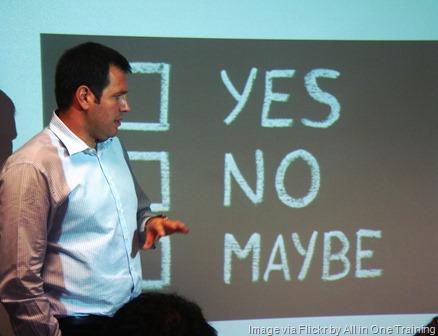 Every boss and decision maker is convinced that he or she is able to look objectively at any problem, and make an unbiased decision. Some typically worry about biases in their team, but rarely think of themselves as a source of bias. In reality, everyone has biases, and needs to make sure they are researching objective data, and listening to alternatives, before making a decision.
Every boss and decision maker is convinced that he or she is able to look objectively at any problem, and make an unbiased decision. Some typically worry about biases in their team, but rarely think of themselves as a source of bias. In reality, everyone has biases, and needs to make sure they are researching objective data, and listening to alternatives, before making a decision.
In her new book, “Problem Solved,” Cheryl Strauss Einhorn offers some excellent guidance and a system for evaluating complex problems, to overcome the human tendency to apply personal biases. These biases, mostly unconscious, are much more extensive that I imagined, and are a key reason that every boss should actively listen to employee input before making decisions.
Here is my summary of some of the key decision-making biases to avoid that she and I have found in most entrepreneurs and business leaders today:
-
Confirmation bias. This bias refers to a form of selective thinking in which every boss seeks out and overvalues information that confirms their existing beliefs, and neglects or undervalues information that is contradictory to those precepts. A confirmation bias often leads them to interpret information falsely because it conflicts with their prior views.
-
Optimism bias. Many frequent decision makers are more confident in the accuracy of their decisions than objective facts would support. Studies show that people who proclaim to be “99 percent sure” of a decision, are right only about 80 percent of the time. This bias can also apply to their subjective confidence in someone else’s judgment.
-
Projection bias. Without meaning to, decision makers tend to project their thoughts and beliefs onto everyone around them, and assume all will think the same way. This can lead to “false consensus bias,” which concludes that all others will find the same decision point that they have reached, leading to a false consensus decision.
-
Salience bias. Salience bias refers to the human tendency to overestimate evidence that is recent or vivid. For example, a recent bad customer review online can easily convince a business leader that customer support is their biggest constraint to growth, when in reality a much bigger problem might be poor lead generation or lack of marketing.
-
Narrative bias. Many business decision makers prefer sample customer stories to data. These narratives add a sense of reality, and help everyone explain and interpret the problem context. However, because stories simplify, this inherent preference of narrative over data often limits a decision maker’s understanding of complicated situations.
-
Relativity bias. The relativity bias inhibits a decision maker’s ability to objectively assess information based upon an over-dependence on comparisons. For example, when given a choice, people tend to pick the middle option: not too pricey, not too cheap. Thinking outside the box is often required in business for an innovative approach to a problem.
-
Authority bias. This bias refers to a decision maker’s natural inclination to follow and believe in authority figures, like top executives, industry experts, or public figures. For example, if Warren Buffett invests in a given business sector, may other business executives will lean that direction in looking for partners or the next big opportunity.
-
Liking bias. If a boss really likes someone on the team, all data and input will be interpreted in their favor. In other contexts, he or she might be inclined to favor a hiring candidate who attended their alma mater, or shared the same cultural background. A related bias is the tendency to reciprocate a favor that someone has done in the past.
There are more, but you get the idea. If you want to make sound decisions or recommendations to your boss on complex problems, you need to know how to control for and counteract your own as well as their assumptions and biases, and apply more expansive and objective thinking.
If you are frustrated by someone on your team or a boss that continually allows their biases to direct their decisions, maybe it’s time to print out this article and leave is on their desk as a reminder. It may be the best decision you can make for the health of your business, and your career. Problem solved.
Marty Zwilling

